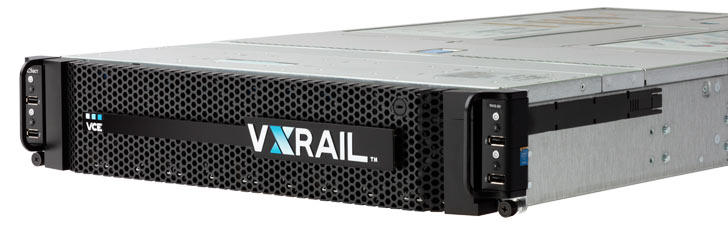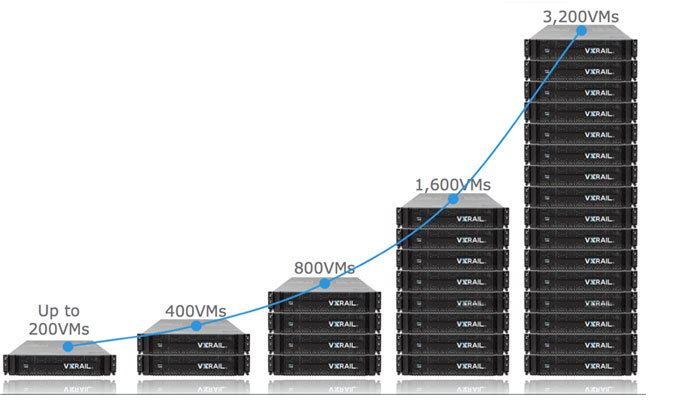This has been an exciting week for us here at the Converged Platforms Division at EMC and our counterparts at VMware! We announced VxRail Appliance, an exclusive hyper-converged infrastructure appliance—the market’s first and only fully integrated VMware hyper-converged solution.
While the concept of using appliances to scale out compute and storage in the data center is hardly new, finding a way to do it that is so tightly integrated with VMware software that it substantially reduces the total cost of infrastructure virtualization in an IT environment most certainly is.

Working in collaboration with our sister company VMware, our engineering teams have created VxRail, a lineup of highly configurable appliances delivering over 112 configuration variations utilizing the latest Intel Xeon class processors enabling IT organizations to completely provision a turnkey infrastructure in a matter of minutes.
Rather than having to design, build and configure an IT system, VxRail appliances are specifically optimized for VMware hyper-converged software that unifies the management of compute and storage. Priced starting at under $60,000, a VxRail appliance can be configured with a mix of solid state drives and magnetic storage, right on up to 76TB of raw Flash capacity. Because the appliances are tightly integrated with VMware software, everything from data deduplication and erasure coding to the ability to backup and replicate virtual machines utilizing EMC’s data protection functionality embedded into the appliance architecture.

As a result, IT organizations not only reduce the headaches associated with acquiring IT infrastructure, the total cost of supporting that environment is sharply reduced because there’s no need to acquire additional third-party software to provide those capabilities.
In contrast, other approaches to hyper-convergence deploy VMware software on top of a platform; as opposed to providing a level of integration that enables IT organizations to not only eliminate the roughly 200 manual steps required to provision VMware today, but also de-provision an entire cluster with the push of single button. Perhaps best of all, by providing that level of IT automation inside the appliance platform, IT organizations gain all the patching and update benefits provided by IT automation without having to acquire or dedicate highly coveted IT skills to enable it. VxRail will free those skilled resources to focus on tasks that differentiate a company and its business versus being dedicated to tasks that simply keep the lights on.
While clearly there’s still a much needed role for Converged Infrastructure in the form of Racks and Blocks to supporting environments with thousands of virtual machines, it’s clear that when it comes to deploying new environments with smaller form factor deployment requirements, an appliance model provides IT with unmatched flexibility. For example, a VxRail appliance might be initially configured with only four nodes. But from that base platform IT organizations can scale the deployment, one node at a time, to support thousands of virtual machines. This modular scale-out VxRail architecture makes it possible to consistently add capacity to an IT environment in a way where costs remain highly predictable.
Just as significantly, those VxRail appliances participate in the same VCE CI Management framework we’ve developed for Racks and Blocks of servers, VCE Vision. That’s critically important when our customers at any given time are going to find themselves managing a mix of the entire VCE portfolio. The management framework commonality will turn information about the infrastructure into information that cannot be ignored because it is in context and comprehensive in view.
Whether it’s a new application for an enterprise department or a remote branch office with a well-defined set of requirements, appliances enable IT organizations to collaborate on the management of compute and storage in ways that are simply unprecedented. The opportunity now is creating an appliance platform that makes use of hyper-converged computing enabled by the latest generation of VMware software.
Obviously, VMware software can be found in many deployment models. But when it comes to jointly engineering hardware and software together there’s nothing quite as elegant as an appliance that has been created by teams that have a vested interest in the ultimate success of our joint customers.